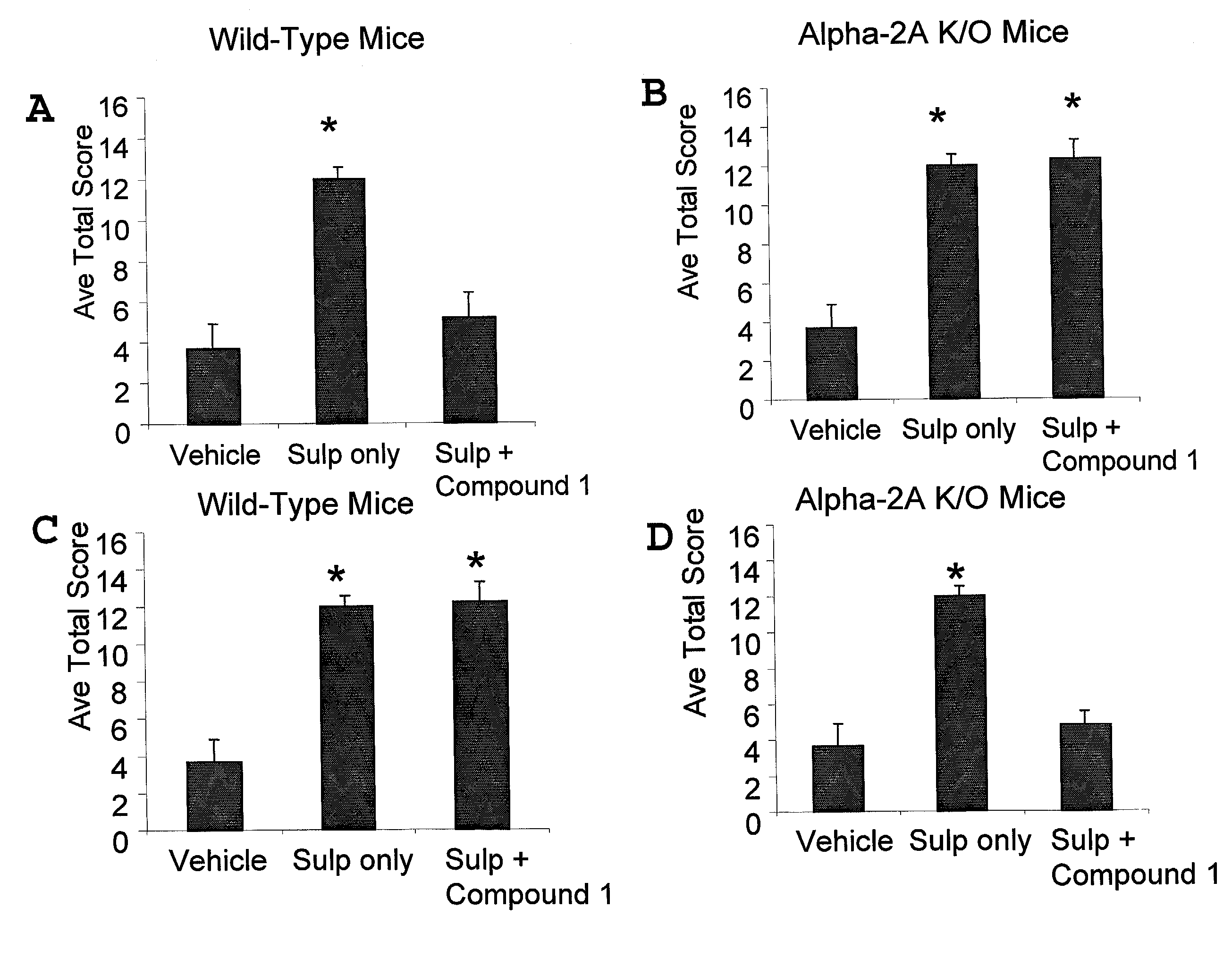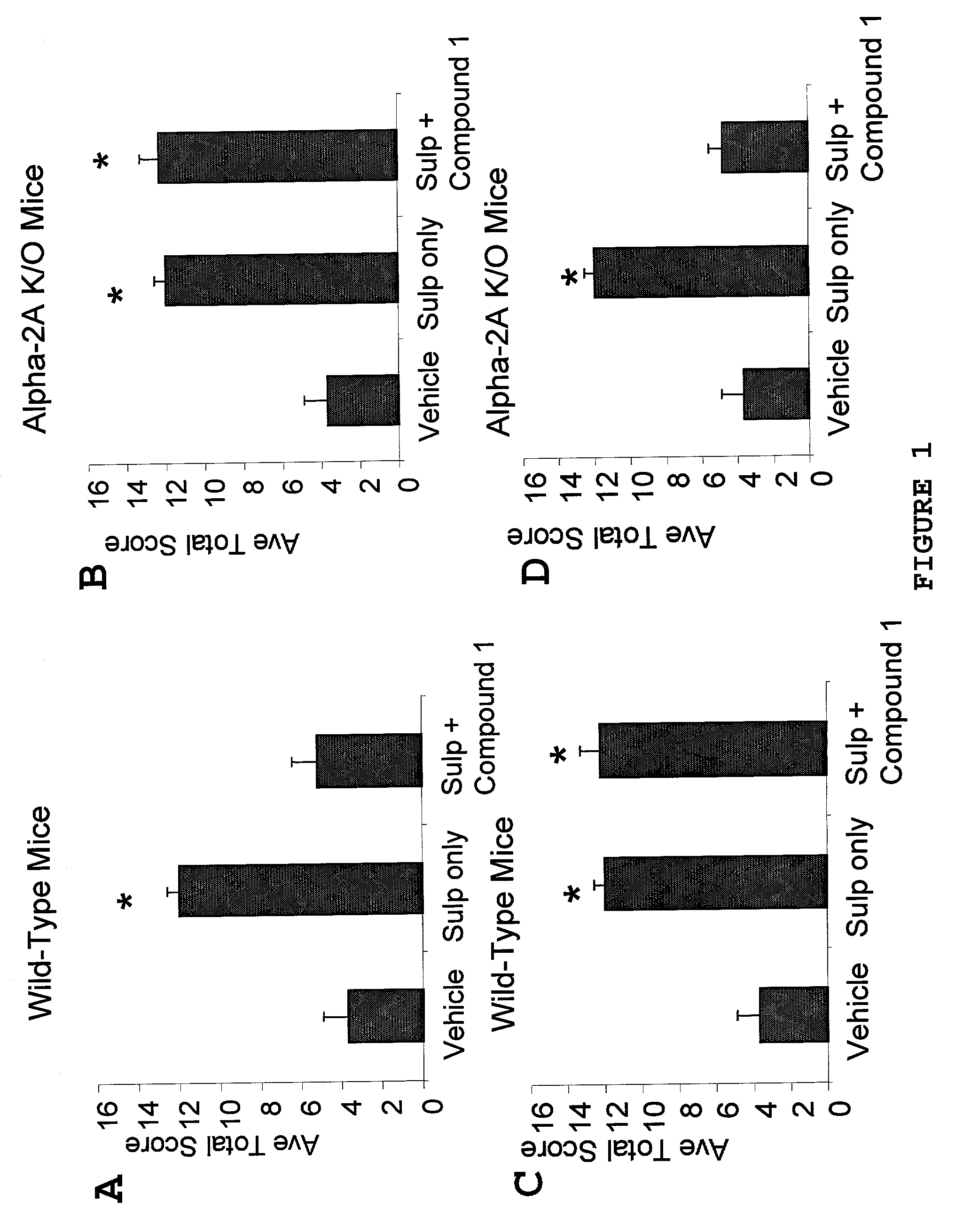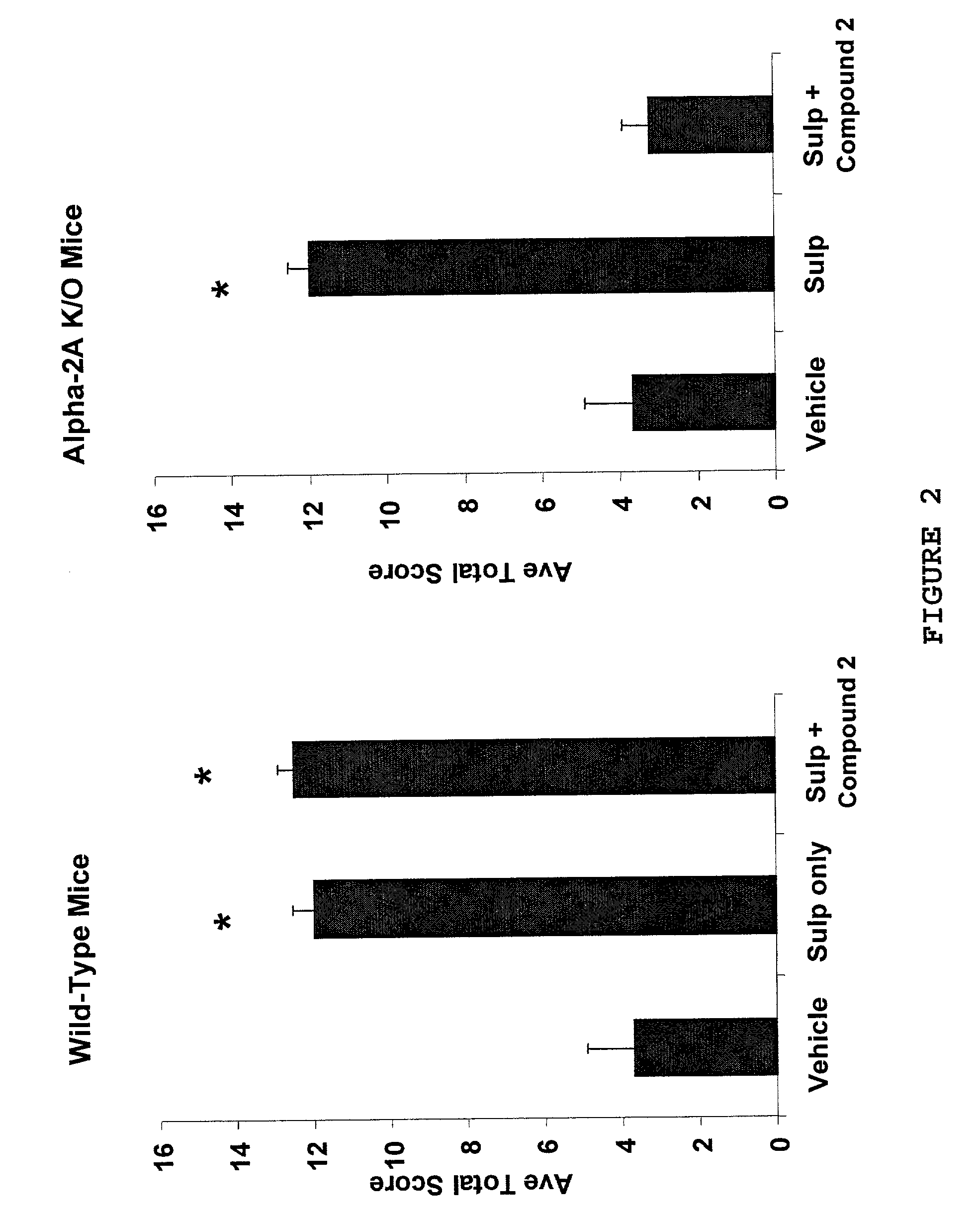Methods and compositions for alleviating pain
a technology of compositions and pain, applied in the field of pain treatment and long-term reversal of chronic pain, can solve the problems of limiting tolerance, sedation, nausea, and current therapies have serious side effects such as cognitive changes, nausea, and sedation, and achieve the effects of reducing the expression or activity of -2b receptors
- Summary
- Abstract
- Description
- Claims
- Application Information
AI Technical Summary
Benefits of technology
Problems solved by technology
Method used
Image
Examples
example i
Preparation of α-Adrenergic Agonist and Antagonist
[0117]This example describes synthesis of various α-adrenergic agonist, including α-adrenergic agonist with minimal α-2A agonist activity such as α-2B agonist with minimal α-2A agonist activity, and synthesis of a selective α-2A antagonist.
[0118]
2-Bromo-5-fluorobenzyl bromide (3.0 g, 11 mmol, 1.0 equiv) was dissolved in dimethyl sulfoxide (100 mL) at ambient temperature. Sodium azide (2.8 g, 44 mmol, 4.0 equiv) was added to the solution and the reaction mixture heated at reflux for one day. The solution was cooled, quenched with water, and then extracted with ethyl acetate. The organic extracts were combined, washed with brine, dried over sodium sulfate and concentrated in vacuo. Purification by column chromatography (10:1 hexanes / ethyl acetate) afforded the azide (0.85 g, 34w). The azide (0.85 g, 3.7 mmol, 1.0 equiv) was dissolved in tetrahydrofuran (25 mL) and water (5.0 mL). KOH (0.20 g, 3.6 mmol, 0.97 equiv) was added to the solu...
example ii
Peripheral Treatment of Pain in α2-A Receptor Knock-out Mice Using α-Adrenergic Agonists
[0121]This example demonstrates that α-adrenergic agonists are effective analgesic agents when administered peripherally in the absence of α-2A receptor activation.
A. Peripherally Administered α-Adrenergic Agonists are Effective Analgesic Agents in α-2A Knockout Mice
[0122]Non-specific α-adrenergic agonists were assayed in α-2A receptor deficient (“knockout”) mice (Hein et al., supra, 1999) using a mouse model of sulprostone sensitized pain in which allodynia is evoked by intrathecal administration of a selective prostaglandin E2 receptor agonist to conscious mice essentially as described in Minami et al., Pain 57:217-223 (1994). In this model, the pain response to stroking the flank with a paint brush is scored eight times over a 35 minute period starting 15 minutes following spinal administration of sulprostone and intrathecal or intraperitoneal administration of drug or control vehicle. Sulpros...
example iii
Relief of Pain by Peripheral Administration of α-Adrenergic Agonists in Genetically Unaltered Animals
[0130]This example demonstrates that α-adrenergic agonists can be peripherally administered to produce a significant analgesic effect with less than a 20% reduction in motor or muscular activity in animals having wild type α-adrenergic receptors.
A. Selective α-2A Antagonists can be Used in Combination With Peripherally Administered α-Adrenergic Agonists to Produce Analgesia
[0131]The Chung rat nerve ligation model is a well accepted model of peripheral neuropathic pain. In the Chung model, partial ligation of left spinal nerves L-5 and L-6 produces a long-lasting hypersensitivity to light touch on the affected left foot. The hypersensitivity is similar to pain experienced by humans with the neuropathic condition of causalgia (Kim and Chung, Pain 50:355-363 (1992)).
[0132]When administered by intrathecal injection to Chung rats, the pan-α-2 agonist clonidine produced significant analges...
PUM
| Property | Measurement | Unit |
|---|---|---|
| time | aaaaa | aaaaa |
| volume | aaaaa | aaaaa |
| pain threshold | aaaaa | aaaaa |
Abstract
Description
Claims
Application Information
 Login to View More
Login to View More - R&D
- Intellectual Property
- Life Sciences
- Materials
- Tech Scout
- Unparalleled Data Quality
- Higher Quality Content
- 60% Fewer Hallucinations
Browse by: Latest US Patents, China's latest patents, Technical Efficacy Thesaurus, Application Domain, Technology Topic, Popular Technical Reports.
© 2025 PatSnap. All rights reserved.Legal|Privacy policy|Modern Slavery Act Transparency Statement|Sitemap|About US| Contact US: help@patsnap.com



